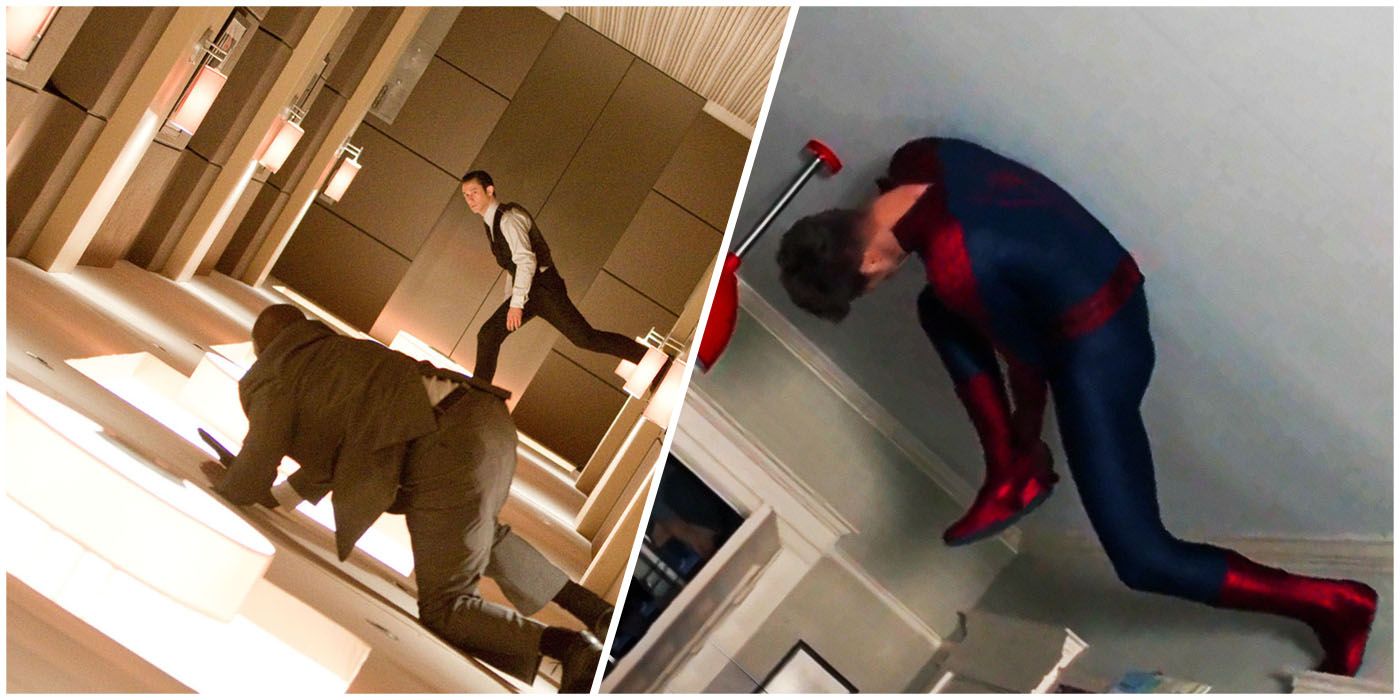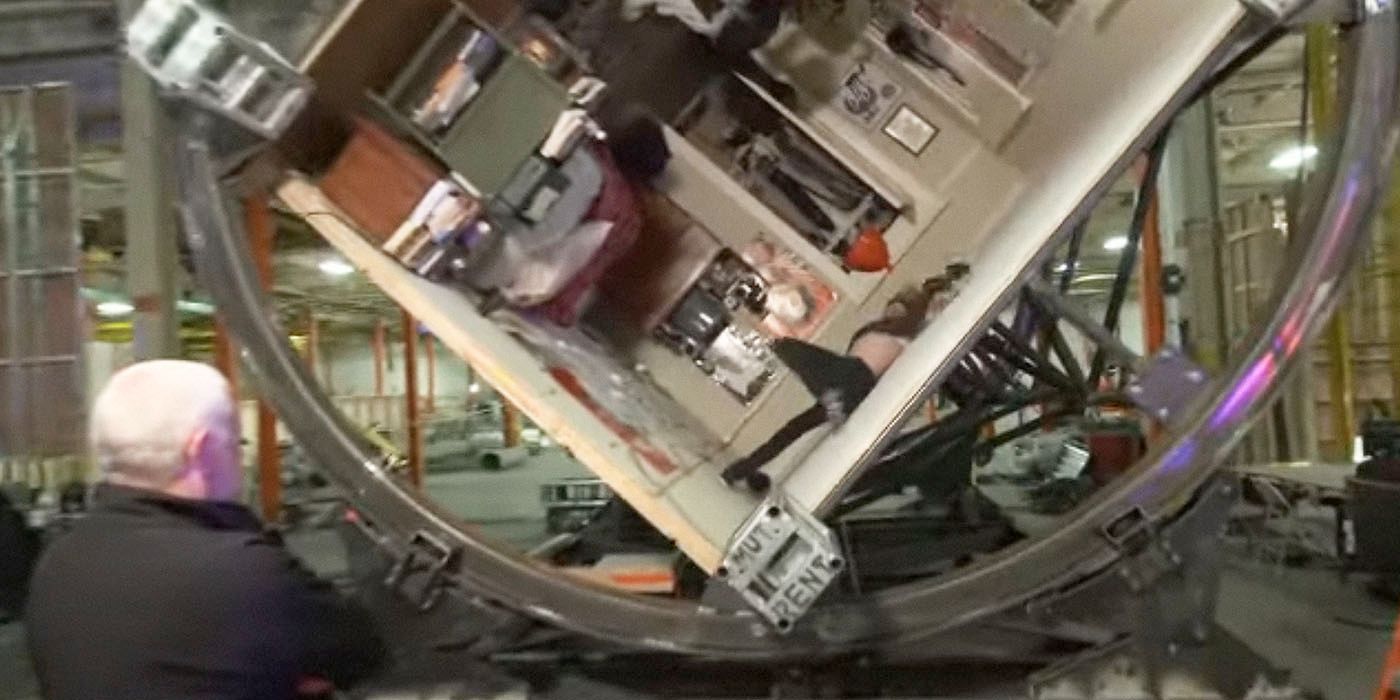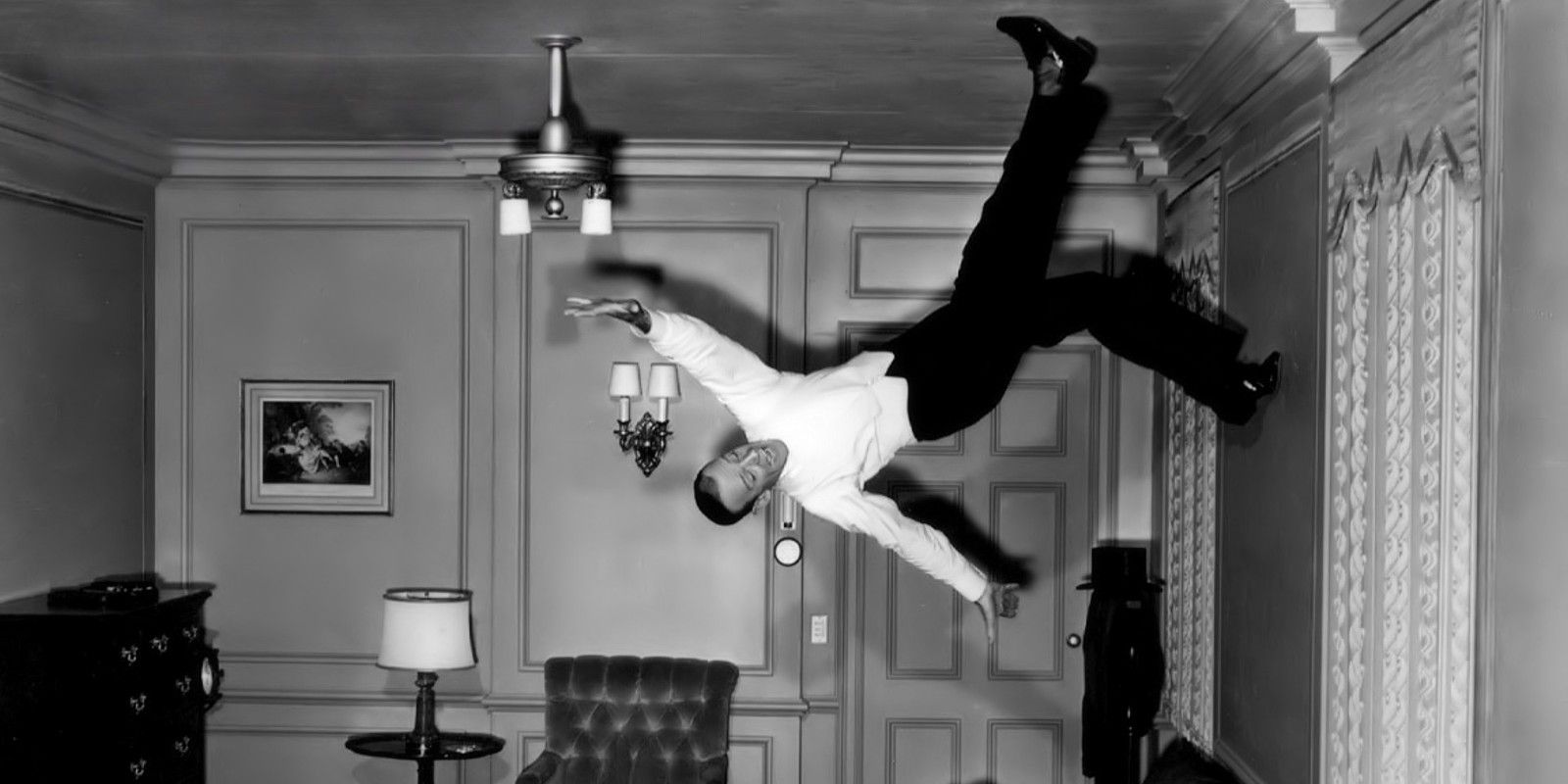Inception's iconic rotating hallway fight sequence got a smaller-scale redux in Marc Webb's The Amazing Spider-Man 2, which used a similar trick of building a set on a centrifuge to defy gravity without resorting to CGI. Though it wasn't as well-received as its predecessor and is unfortunately most remembered as the movie that ended Andrew Garfield's short stint as Peter Parker, The Amazing Spider-Man 2 is noteworthy for using this challenging practical effect to convey Spider-Man's casual relationship with gravity.
In Inception, the hallway fight occurs in the second dream level, while on the first level Yusuf (Dileep Rao) is engaged in a high speed car chase. As the dreaming Arthur (Joseph Gordon-Levitt) is rocked inside the swerving vehicle, the hallway he's in on the second dream level also tips from side-to-side until finally the van is driven off the road and rolls over - the hallway rolling with it. The turning hallway set was 100 feet long and built on a giant centrifuge that could be rotated 360 degrees, with one camera mounted on the "floor" and another on a telescopic crane that could be extended through the hallway and shoot the scene without being locked to the set's rotation.
In The Amazing Spider-Man 2 the rotating set trick is used for a scene in which Peter Parker wakes up still in costume after returning home from his superhero exploits, and must rapidly get out of his spidey-suit before Aunt May enters the room. The panicked Peter rolls onto the wall and then onto the ceiling, getting undressed the whole time, before finally dropping down into bed just as May bursts in. Garfield had to negotiate his way around the furniture of Peter's cluttered room while tumbling and pulling off his costume - no small feat of athleticism.
Inception wasn't by any means the first movie to use a rotating set. In the musical number "You're All the World To Me" in Stanley Donen's 1951 film Royal Wedding, Fred Astaire blew audiences away by dancing around a room and then moving to dance onto the walls and the ceiling. All of the furniture in the room had to be bolted down for the sequence, and the camera operator had to do their job while being turned slowly upside down through a full 360 degree rotation. Unlike The Amazing Spider-Man 2 there are no cutaways during the turn; instead there's a single take of more than a minute and a half, with Astaire having to nail all of his dance choreography while also dealing with the shifting gravity.
Stanley Kubrick's 2001: A Space Odyssey featured a similar structure for the set of the spaceship Discovery One, to create the impression of artificial gravity. This set-up came with the additional challenge of having two actors appear to experience different gravity at the same time (for example, one sticking to the "ceiling" and the other sticking to the "floor"), which was achieved by strapping one of the actors down. In the most notable example of this - a scene where David Bowman (Keir Dullea) walks around to join Frank Poole (Gary Lockwood), who is eating a meal - Lockwood's food had to be glued onto his fork to prevent it from falling and breaking the illusion.
While director Christopher Nolan and cinematographer Wally Pfister may not have invented the technique, Inception was uniquely ambitious in the enormous scale of the centrifuge that had to be built, the speed at which it moved, and the complex choreography of the hallway fight. Altogether the sequence required five weeks of rehearsals and filming - all for less than a minute of footage in the final cut of the film. The Amazing Spider-Man 2's version of the same no-CGI trick, while still impressive, is also simpler, with only one actor rolling around the walls of a single room, and cuts between each of the brief shots.
The centrifugal set is a classic practical effect that still looks fantastic, but isn't used all that often in Hollywood simply because it's so expensive and time-consuming to pull off. Spider-Man's other gravity-defying feats in The Amazing Spider-Man 2 were accomplished using either traditional wire work or CGI. When it comes to creating one particular eye-opening setpiece for a movie, however, the rotating room is as impressive today as it was when Fred Astaire danced on the ceiling.



